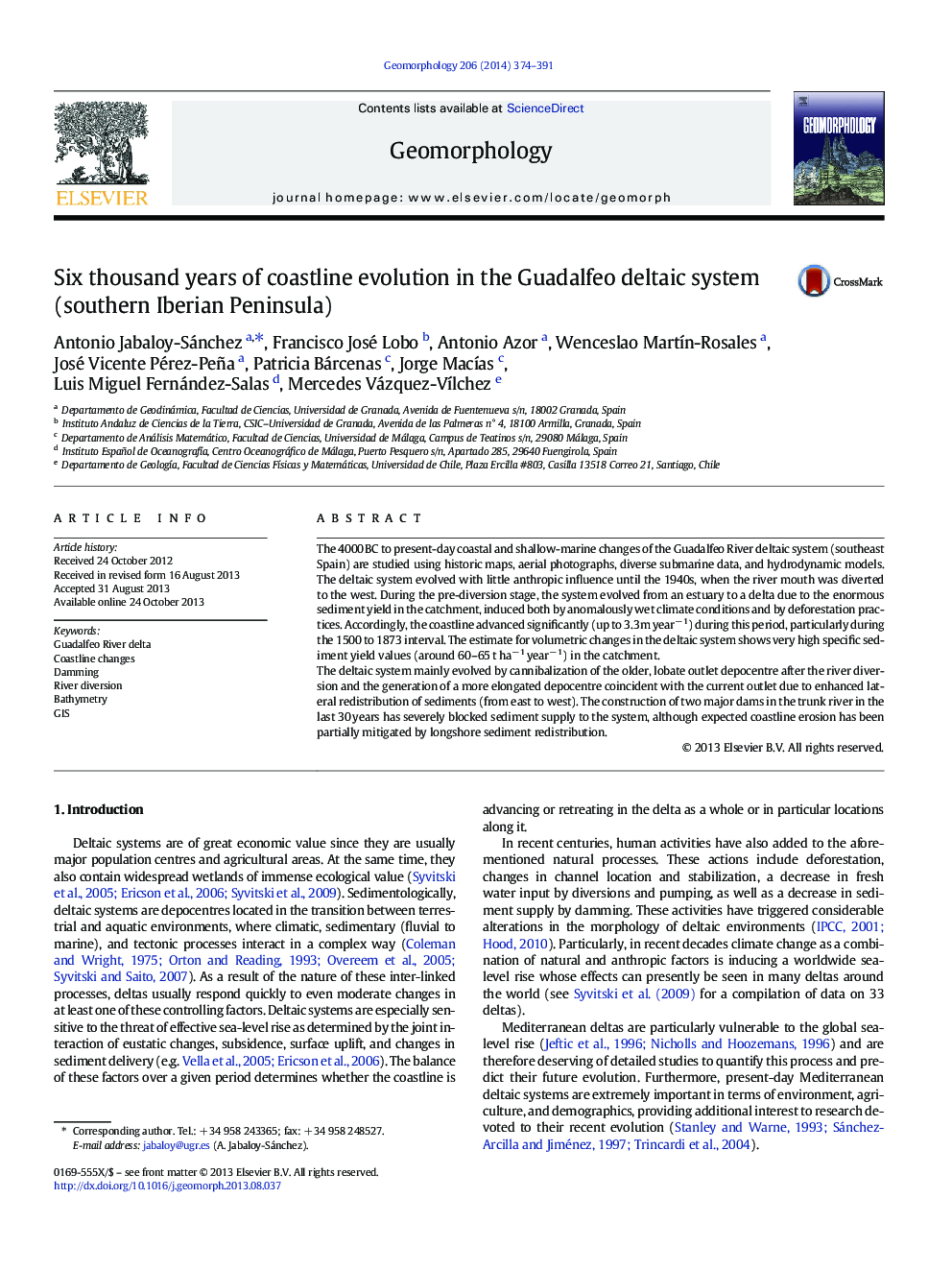| Article ID | Journal | Published Year | Pages | File Type |
|---|---|---|---|---|
| 4684670 | Geomorphology | 2014 | 18 Pages |
The 4000 BC to present-day coastal and shallow-marine changes of the Guadalfeo River deltaic system (southeast Spain) are studied using historic maps, aerial photographs, diverse submarine data, and hydrodynamic models. The deltaic system evolved with little anthropic influence until the 1940s, when the river mouth was diverted to the west. During the pre-diversion stage, the system evolved from an estuary to a delta due to the enormous sediment yield in the catchment, induced both by anomalously wet climate conditions and by deforestation practices. Accordingly, the coastline advanced significantly (up to 3.3 m year− 1) during this period, particularly during the 1500 to 1873 interval. The estimate for volumetric changes in the deltaic system shows very high specific sediment yield values (around 60–65 t ha− 1 year− 1) in the catchment.The deltaic system mainly evolved by cannibalization of the older, lobate outlet depocentre after the river diversion and the generation of a more elongated depocentre coincident with the current outlet due to enhanced lateral redistribution of sediments (from east to west). The construction of two major dams in the trunk river in the last 30 years has severely blocked sediment supply to the system, although expected coastline erosion has been partially mitigated by longshore sediment redistribution.
